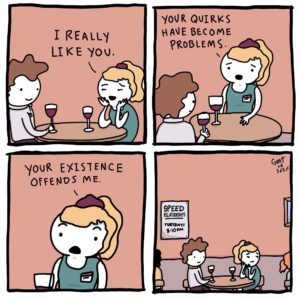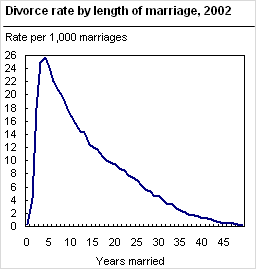Last week, I wrote about how important it is to overcome some of our mind’s natural inclinations in order to be happy, to build intimacy in our relationships, and even for our planet to survive. Even if humans have naturally evolved to act in a certain way, that does not necessarily mean we should encourage it. Rather, we have to think about what we value, ensuring our actions align with what really matters.
This week, I would like to focus on more behavioral tendencies that are written into our very DNA, particularly the ones that get activated when we enter into romantic relationships.
If evolution has designed us to do anything, it is to survive and procreate. As a result, we have deeply ingrained behavioral patterns that promote our own survival and procreating with other members of our species. Both food and sex, for example, are deeply rooted in the brain’s reward centers, which are full of dopamine and other neurotransmitters that essentially tell us, “Yes, do that thing and keep doing it.”
This is why it is so easy to get hooked on things like refined sugar, porn, or cocaine; each are heavily distilled and concentrated versions of real-world experiences that stimulate dopamine, driving our behavior.
Fortunately, by knowing how our brain works, we become empowered to make informed decisions around how best to live our lives, while still taking those evolutionary tendencies into account.
There is a distinct moment that happens in every single intimate relationship, where one center of the brain finishes up what it evolved to do, and another center of the brain takes over to do what it evolved to do. These centers are deeply wired to perform their functions after millions of years of evolutionary history filled with changes designed to increase the probability of our species continuing.
Parts of our brain designed to make us fall in love will shift over to the parts of our brain designed to make us be in love. While this can happen at any time in a relationship – and, for some people, it happens sooner rather than later – most researchers have found that this can happen anywhere from 6 to 18 months into a relationship, but some say up to three years.

While shifting from falling in love to being in love might sound like an easy transition, in reality, it is quite challenging, and where most relationships tend to break up. Many partners find themselves simply unable to weather the storm. In fact, 3 out of 5 new relationships will be over within the first year, and the divorce rate of marriages peaks around 2 to 3 years, too, since it typically takes a little longer to get divorced after the love has died. Anybody who is not in an arranged marriage should know how these centers work.

To understand why this is the case, we have to understand these two parts of the brain. Let us first cover falling in love, then being in love, and then we will talk about how to ease the transition between the two.
Part I: The Courtship Phase
Once you get to know somebody and find yourself starting to fall in love with them, you enter into what psychologists call the courtship phase. This is also sometimes called the attraction, romance, passion, or limerence phase.
This is the phase that you see in every romantic movie and hear about in every romantic song. This is the phase where you cannot stop thinking about this other person, where the “butterflies in the stomach” feelings tend to occur.
People tend to have intense feelings of joy, feeling a newfound energy, as well as obsessive and intrusive thoughts about the other person. A lot of this energy gets funneled into new experiences together, like dancing all night, travelling together, partying, or more often, lots of sex in lots of places.
Polyamorous people call this phase the “New Relationship Energy Phase,” and it can be a challenge to watch one’s partner fall head over heels for someone they just met. It can be a good thing as well, however, since some poly people also report that, when their partner is full of energy, so are they, which helps to renew the passion in the relationship.
The romance phase is also when a person tends to idealize their partner the most. Partners in new relationships think that they found the most perfect person on the planet who completes them in every way. There also might be a deep fear of loss and anxiety at this point, as well.
There are many researchers who consider couples in the limerence phase to basically be on drugs since there is a flood of activating chemicals in the brain at this point, including dopamine, norepinephrine, and adrenaline. All of these lead to the newfound energy described earlier.
Interestingly, there are actually lower levels of serotonin in the brains of people in love. This may seem odd, until you combine it with the finding that people with obsessive compulsive disorder (OCD) also have lower serotonin. This is why people in love cannot stop thinking about the other person–they are cortically obsessed.
This elevated state of being cannot last forever, however, and, at some point around the one year mark, things change. Hopefully, relationships move to phase two, the commitment stage.
Part II: Commitment
The commitment stage of a relationship tends to be a lot less passionate and exciting, but closer and more secure. Couples no longer dance the night away or make love on the beach, instead they watch television together or read books next to each other on the couch. The commitment stage reflects a more mature love that grows over time.
This stage is also known as the attachment, intimacy, or companionship phase of a relationship. At this point, a new area of the brain takes over, so there is a totally different chemical cocktail flowing through it. The deep feelings of connection are fueled by oxytocin, vasopressin, and feel-good endorphins. Rather than being on energizing “cocaine,” couples are on relaxing “morphine,” content, feeling good, and relaxed in their connection.
At this point, couples are bonded together, because, in theory, they will be raising a child now. All that lustful lovemaking in the courtship phase was designed to make sure a baby was born, and now this flood of bonding chemicals exists to keep the parents together in order to raise the child.
Few things are as good for a young developing mind than stability. Consistent, loving caregivers play essential roles in the mental-emotional development of young kids. Unlike many species on the planet that receive no support from either or both parents, human children need years of caregiving in order to become fully functioning adults.
In other words, evolution wired us to:
- be sexually attracted to each other to start a relationship;
- fall in love, do tons of fun new things, and, most likely, have a lot of sex in order to produce offspring; and then
- be firmly bonded together for the raising of those children.
Unfortunately, a lot of couples break up during that shift from step two to three.
Making a Successful Transition
Why is this transition so hard? There are two main reasons. The first is that we have to shift from idealistic love to realistic love, which can be a rude awakening for a lot of people.
This means shifting from thinking that you just met the most perfect person on the planet, someone who completes you in every way, to seeing them as an actual person who has just as many issues as you do. They have their own childhood conditioning, their own fears, worries, concerns, complaints, and challenges, too. They might have a temper, or maybe they emotionally withdraw during conflict.
They probably have a totally different understanding of what it means to be in a relationship, too. Do they think it means you tell each other everything? Does saying “I’m sorry” mean “I regret what happened,” or “I acknowledge my actions hurt you”? Is your partner also your best friend?
In sharp contrast to the idealistic love stage–where everything was easy and perfect–realistic love requires more work and awareness. Some therapists call this transition the power struggle part of a relationship, because it brings up the most challenges. What was once easy and fun has suddenly turned into a lot of challenging work.
At this point, a lot of couples conclude they must be with the wrong person, moving on to another, only to discover, another year down the line, that the exact same thing occurs.
Idealistic love says that you fall in love and live happily ever after; realistic love says that romantic partners must work together to continue growing closer rather than further apart. They have to practice patience, while making compromises and sacrifices.
The second reason this transition is so hard is because it’s only in the commitment stage that a person’s own childhood wounding and pain come up. In other words, after the love goggles have been taken off, the real stuff comes up. This is where a person’s attachment style factors in, where they might become emotionally unavailable because, perhaps, one of their parents was emotionally unavailable.
The transition point from romance to commitment is where the real work of love begins, because love is the most healing force on the planet, and loving relationships are the greatest containers for our own emotional growth. Many people, however, are not ready to face up to their shadows, to do the hard emotional work, to acknowledge their own wounds, or even to dispel their fairytale dreams that the feelings involved with falling in love should last forever.
The first step is simply awareness. Every new couple should know that this transition is going to happen, and should prepare themselves to weather the storm. Couples therapy can help, but so can both parties being committed to supporting each other, ready to work through whatever challenges arise.









